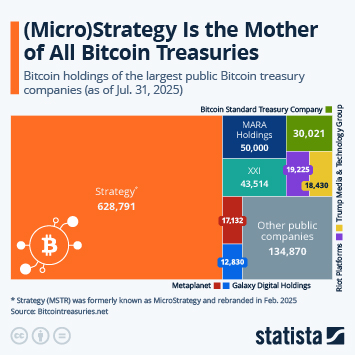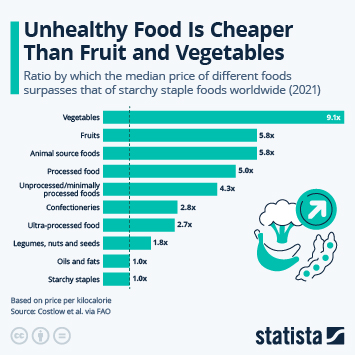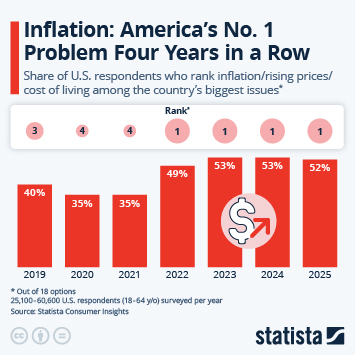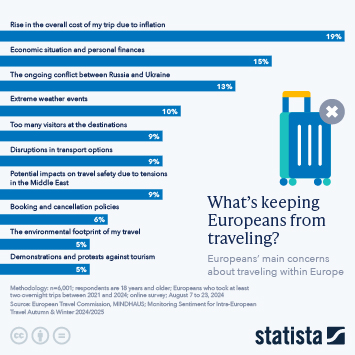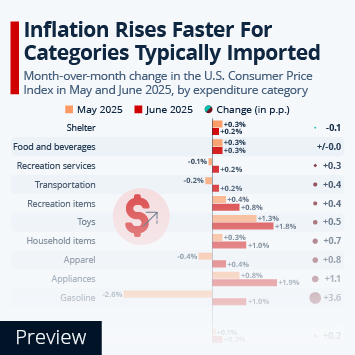Inflation in the United States ticked up slightly in August, as the monthly increase in the Consumer Price Index for All Urban Consumers (CPI-U) accelerated to 0.6 percent - the highest since June 2022. While that sounds like a setback in the fight against inflation, there were still plenty of positives to take from the latest CPI report, as the uptick was largely driven by a steep increase in gas prices.
The CPI-U is a complex construct based on the collection of about 94,000 prices and 8,000 rental housing units quotes each month, designed to measure the changes in prices of all goods and services purchased for consumption by urban households. Different expenditure categories are weighted based on their actual share of consumption expenditure, meaning that increases in rent or food prices have a larger impact on the overall CPI than increases in prices of apparel.
With a relative importance of 34.7 percent, shelter (i.e. rent and homeowners’ rent equivalent) is by far the largest expenditure category in the CPI-U, followed by food and energy. Gasoline, which is a subcategory of the energy index, accounts for 3.4 percent of the CPI-U and yet, due to a 10.6 percent jump, it accounted for more than half of the monthly increase in the all-items index.
As our chart shows, other major spending categories saw relatively modest increases last month, with transportation services and shelter the other main contributors to the 0.6 percent increase in prices. Looking at year-over-year price increases, shelter continues to be the main driver of inflation, accounting for almost half of the latest 3.7 percent increase. Interestingly, energy (including gasoline) continues to have an overall cooling effect on year-over-year inflation, as prices were even higher this time of last year. Due to the latest surge in gas prices, that cooling effect was smaller than in previous months, however, explaining how high gas prices still contributed to the setback in disinflation.








